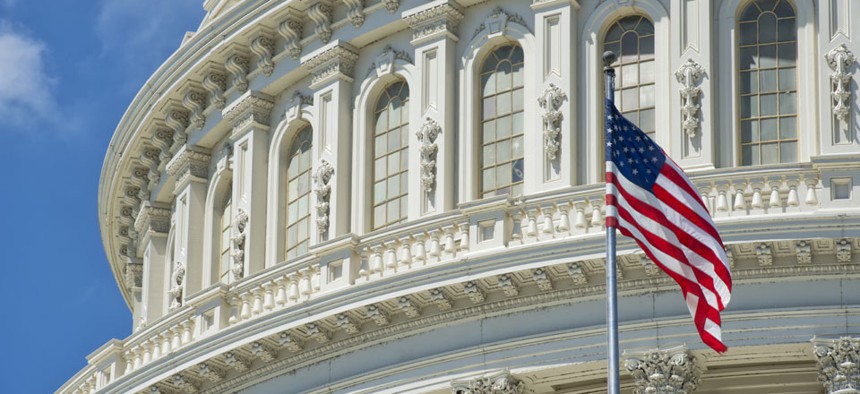
Andrea Izzotti/Shutterstock.com
House Stopgap Spending Measure Would Help Agencies Dodge Furloughs
Continuing resolution keeps the government running until Dec. 15 -- and the sequester in place.
The chairman of the House Appropriations Committee on Tuesday evening unveiled a spending measure to keep the government open past Sept. 30, when current funding runs out, and give federal agencies flexibility to avoid furloughs.
The continuing resolution (H.J. Res. 59) would provide funding at a rate of $986.3 billion to keep agencies open through Dec. 15. Most programs would be funded at roughly their current, post–sequestration levels, but the resolution does provide wiggle room in some areas “to prevent catastrophic, irreversible, or detrimental impacts on government programs, or to ensure good government and program oversight,” according to a committee summary.
Wildfire suppression efforts and Veterans Affairs Department disability claims processing, for instance, would receive boosts. The resolution would grant the Customs and Border Protection and Immigration and Customs Enforcement bureaus funding flexibility to maintain current staffing levels.
The stopgap measure also contains a provision stating that agencies may increase their rate of spending on civilian pay and benefits if necessary to avoid furloughs, after exhausting other options for reducing or deferring non-personnel-related costs.
Appropriations Committee Chairman Rep. Hal Rogers, R-Ky., emphasized the measure is a temporary solution.
“This is not the preferred way of doing the nation’s financial work – this Congress can and should be passing regular appropriations bills that reflect the country’s changing fiscal needs and realities,” he said in a statement. “However, given the late date, a continuing resolution is necessary to stop a governmentwide shut down that would halt critical government programs and services, destabilize our economy, and put the safety and well-being of our citizens at risk.”
Partisan politics, however, are complicating congressional passage of the stopgap measure. The House continuing resolution includes a concurrent resolution that defunds the 2010 Affordable Care Act. Republican leadership included the amendment in the temporary spending measure to link a vote on keeping the government open to a vote on starving Obamacare of money. The Tea Party faction of the GOP has urged the House Republican leadership to use the threat of a government shutdown to deny the health care reform law of funds.
The plan, as outlined by House Majority Leader Eric Cantor, R-Va., requires the Senate to consider the defunding language before it considers the continuing resolution, forcing members in that chamber to go on the record on funding Obamacare. If they pass the amendment, then it would be added to the CR and head to President Obama; if they defeat it, which is likely, then the Senate could consider the CR without it, enabling Congress to avoid a government shutdown. It’s a convoluted strategy that allows lawmakers to say they voted against funding the health care law, but not at the expense of a government shutdown.
The stopgap spending measure now heads to the House Rules Committee, and the full House could vote on the continuing resolution as early as Thursday.
(Image via Andrea Izzotti/Shutterstock.com)






